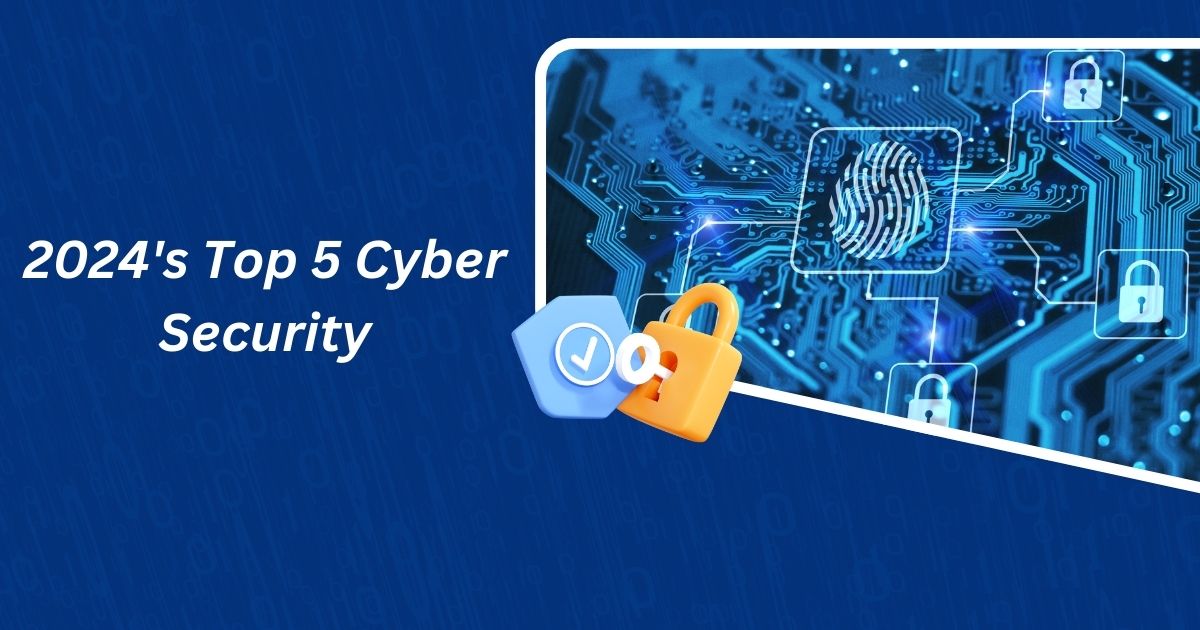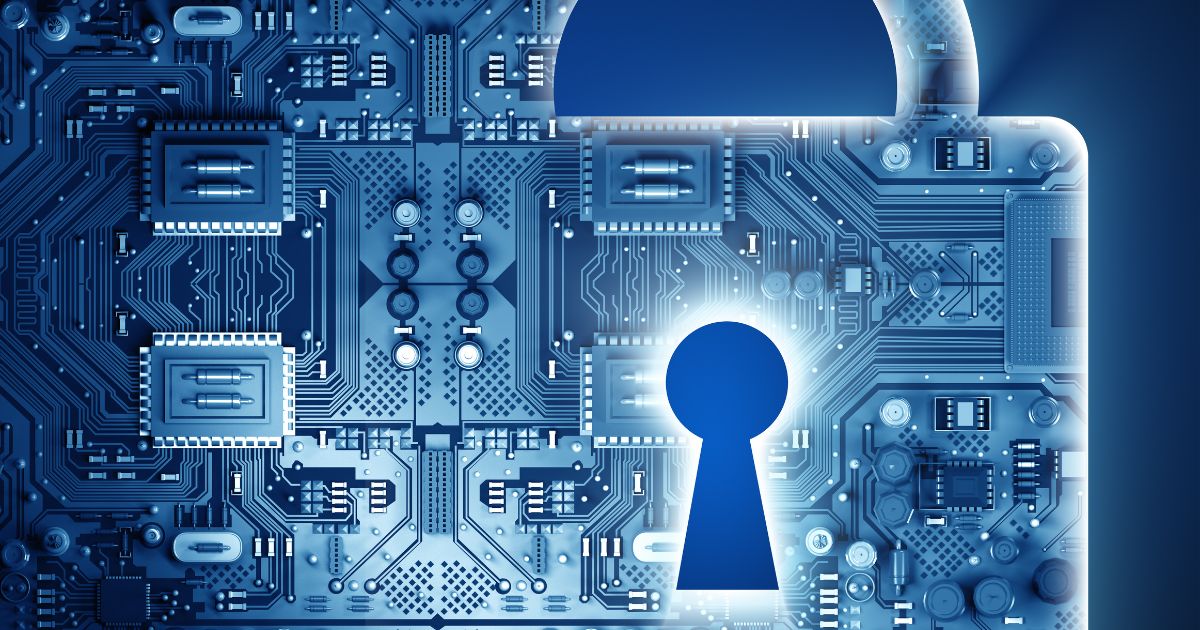
Introduction
Overview of 2024’s Cybersecurity Landscape
2024 guarantees to be a 12 months of rapid evolution in cybersecurity as new threats emerge along advanced solutions.
With the growing reliance on virtual networks, from far flung paintings to IoT, cybersecurity threats are also becoming extra sophisticated.
In this evaluate, we’ll explore how the panorama is transferring with new technologies like AI and system learning, whilst corporations and individuals adapt to remain stable.
Understanding those changes is critical for navigating the complex cybersecurity demanding situations of 2024 and preparing safely.
Why Cybersecurity Matters More Than Ever
Cybersecurity has end up a principal challenge, as global cyber incidents cost billions each 12 months.
In 2024, cybersecurity is more critical than ever because of increased dependence on generation in all factors of existence—from digital banking to smart homes.
With personal and organizational records continuously below risk from hackers, secure networks are now a necessity, no longer an alternative.
This phase highlights the vital position of cybersecurity in modern-day society and why proactive steps are critical to avoid excessive repercussions.
Table of Key Insights
This table provides readers a quick summary of the top 5 cybersecurity trends for 2024, offering a snapshot of the main developments discussed in the article.
| Trend | Summary |
|---|---|
| AI-Driven Threat Detection | AI tools help detect cyber threats in real time, providing robust, dynamic security responses. |
| Cloud Security Enhancements | With increased cloud usage, stronger practices are essential to protect remote data. |
| Data Privacy Laws | New regulations require businesses to prioritize protecting user data. |
Zero Trust Architecture |
Limits access to sensitive systems by demanding continuous verification for user access. |
Security Automation |
Automation in security processes boosts efficiency and speeds up threat responses. |
Key Takeaways
Top Benefits of Adopting Latest Cybersecurity Trends
Adopting the latest cybersecurity trends offers substantial benefits to organizations and individuals alike. From enhanced data protection to streamlined processes, these trends help mitigate risks associated with digital threats.
Adopting AI-driven threat detection, for instance, allows businesses to detect and respond to threats in real time. Security automation also simplifies complex tasks, reducing human error and improving efficiency.
With each trend, cybersecurity defenses become stronger, minimizing the risk of costly breaches and protecting data integrity.
Potential Risks of Ignoring These Trends
Ignoring current cybersecurity trends can expose organizations and individuals to significant risks, including financial loss, reputational damage, and legal repercussions.
Neglecting cloud security, for example, could lead to unauthorized access and potential data leaks. Similarly, failing to implement Zero Trust Architecture leaves systems vulnerable to insider threats.
In an era of advanced cyber-attacks, overlooking these trends is akin to leaving the door open for malicious actors, with severe consequences for privacy and business continuity.
Main Content: 2024’s Top 5 Cybersecurity Trends
AI-Driven Threat Detection
- How AI is Revolutionizing Cybersecurity
AI has become a game-changer in cybersecurity, enabling real-time threat detection that adapts to evolving attack patterns.
By analyzing massive amounts of data quickly, AI algorithms can detect unusual patterns that might indicate potential cyber threats.
This proactive approach minimizes the time it takes to identify and neutralize threats, making AI a valuable tool for both organizations and individuals.
In 2024, AI-driven cybersecurity tools are expected to become even more advanced, allowing for earlier detection and response to increasingly complex cyber threats.
- Top Tools for AI-Based Security
As AI continues to shape cybersecurity, several top-rated tools stand out for their effectiveness and innovation.
Tools like Darktrace, CrowdStrike, and Symantec Endpoint Protection leverage AI to monitor network traffic, identify potential vulnerabilities, and respond to threats in real time.
These tools provide advanced threat intelligence and help companies stay one step ahead of cybercriminals.
Incorporating one or more of these AI-based security tools into your cybersecurity strategy can provide a robust defense against both known and emerging cyber threats.
Cloud Security Enhancements
- Why Cloud Security is Critical in 2024
The increasing shift towards cloud-based solutions has led to an urgent need for enhanced cloud security.
With more data stored in cloud environments, securing these platforms is essential to prevent unauthorized access.
In 2024, cloud security is critical as more companies adopt hybrid and remote work models. Implementing encryption, strong authentication, and regular audits are essential to maintain data integrity and protect against potential breaches.
Prioritizing cloud security means safeguarding both sensitive data and operational continuity.
- Best Practices for Securing Cloud Data
Securing cloud data requires a layered approach that combines multiple strategies.
First, ensure strong access controls and multi-factor authentication (MFA) are in place. Regularly update and patch software to mitigate vulnerabilities.
Encrypt data both in transit and at rest to prevent unauthorized access. Additionally, conducting periodic security audits can identify potential weaknesses and improve your cloud security posture.
Adopting these best practices can protect your data and bolster your overall cloud security strategy in 2024.
Data Privacy Laws and Compliance
- New Regulations Businesses Must Know
In 2024, data privacy laws continue to evolve, with new regulations aimed at safeguarding user data. The EU’s GDPR set the tone for global data privacy, and other regions have followed with similar legislation.
The U.S., for instance, is implementing state-level regulations like the CCPA in California. Businesses must stay updated on these laws to avoid penalties.
This section will detail key changes and their impact on companies, including the importance of data transparency and consent in business operations.
- How to Ensure Compliance with Evolving Laws
Staying compliant with data privacy laws can be challenging, but implementing regular data audits, training employees, and creating a robust data management policy can help.
Businesses should document and review all data processing activities and obtain explicit user consent where required. Utilizing data anonymization techniques also enhances compliance.
Ensuring that employees understand data handling best practices and adhering to updated laws will safeguard your organization from non-compliance risks and potential fines.
Zero Trust Architecture
- What is Zero Trust and Why It’s a Must
Zero Trust Architecture (ZTA) is a security model that assumes every user or device is a potential threat until verified.
This model limits access to only the information and resources necessary, minimizing exposure to sensitive data. In 2024, ZTA is increasingly essential as businesses face insider threats and sophisticated attacks.
Implementing Zero Trust reduces the risk of breaches by verifying every user, device, and connection continuously, making it a vital cybersecurity approach for modern organizations.
- Implementing Zero Trust: Key Steps
To implement Zero Trust, start by establishing strict identity verification for all users and devices accessing your network.
Set up multi-factor authentication and restrict access based on user roles. Deploy micro-segmentation to separate parts of your network, reducing the impact of potential breaches.
Regularly monitor and verify each access request to maintain continuous protection. Following these steps can provide strong security and minimize the risks associated with unauthorized access and insider threats.
Security Automation

- Advantages of Automating Security Protocols
Automating security protocols saves time, reduces human error, and allows for faster threat response.
With automation, organizations can streamline repetitive security tasks like patch management, threat detection, and vulnerability scanning.
In 2024, automation is expected to be an integral part of cybersecurity strategies, providing a quick and efficient response to cyber threats.
By reducing the workload on cybersecurity teams, automation helps ensure that security protocols are consistently and correctly implemented.
- Top Automation Tools to Consider
Several automation tools have gained popularity for their efficiency and reliability.
For example, Splunk, Palo Alto Networks, and IBM’s QRadar offer automated security solutions for monitoring, threat detection, and response.
These tools analyze real-time data, detect anomalies, and initiate responses to mitigate risks without manual intervention.
Adopting automation tools allows organizations to stay ahead in cybersecurity by automating complex processes and ensuring rapid response to potential threats.
Table of Practical Tips
This table provides readers with practical tips for each trend, offering a quick reference guide.
| Cybersecurity Trend | Practical Tip |
|---|---|
| AI-Driven Threat Detection | Regularly update AI tools to keep up with evolving threats. |
| Cloud Security | Always enable multi-factor authentication for cloud access. |
| Data Privacy Laws | Conduct regular audits to ensure compliance with regulations. |
| Zero Trust Architecture | Implement role-based access to limit data exposure. |
| Security Automation | Use automation for routine tasks like patch management. |
FAQs
What Are the Biggest Cybersecurity Threats in 2024?
The biggest cybersecurity threats in 2024 embody AI-pushed phishing assaults, ransomware targeted on corporations, and vulnerabilities in IoT gadgets.
Each of these threats is becoming more cutting-edge and sizable, making it vital for companies and those to stay informed about the extremely-modern-day safety practices. Adopting advanced cybersecurity measures can assist prevent those commonplace threats.
How Can Small Businesses Enhance Their Cybersecurity in 2024?
Small businesses can beautify their cybersecurity with the useful useful resource of adopting simple however effective measures, which includes using multi-problem authentication, offering normal protection schooling to employees, and enforcing much less pricey protection device like endpoint safety.
Additionally, partnering with controlled safety carriers can provide small corporations robust safety with out a huge in-residence group, supporting them stay blanketed interior a possible charge variety.
Conclusion
Recap of Key Cybersecurity Trends for 2024
To end, the top cybersecurity dispositions of 2024—AI-driven risk detection, cloud protection enhancements, statistics privacy regulation compliance, Zero Trust shape, and safety automation—are essential for absolutely everyone aiming to stay sturdy.
By adopting those practices, corporations and people alike can mitigate the effect of cyber threats, ensuring a extra solid virtual environment.
Final Thoughts on Staying Protected in 2024
Staying regular in 2024 technique staying knowledgeable and proactive.
Adopting the extraordinarily-modern-day tendencies in cybersecurity can considerably lessen the chance of falling victim to cyber assaults.
As threats keep to conform, so need to our strategies to defend facts and privateness, making sure a stable and everyday virtual destiny for all.







